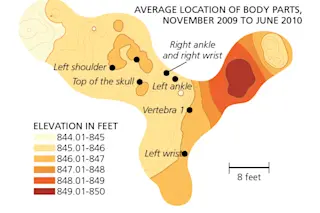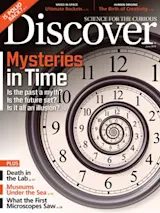Tom Vezo/Minden Pictures/Corbis
Kate Spradley slips blue hospital booties over her leather flats before stepping through the double security gate of a high fence surrounding a 26-acre outdoor research area on the Freeman Ranch in San Marcos, Texas. With her shoes safely covered to avoid contaminating the scene, she walks up to the cadavers laid out in the tall grass and notes the broken ribs and shattered eye sockets, the remains picked over by vultures.
Spradley is a biological anthropology professor at Texas State University, owner of the Freeman Ranch. She collaborates on her fieldwork there with Michelle Hamilton, a forensic anthropology professor also at Texas State. The two are trying to provide more accurate information in death investigations by studying how vulture behavior, combined with weather and geography, can modify human remains.
Vultures expose bones to rapid weathering and carry remains beyond the body’s immediate location. These factors, sometimes ...















